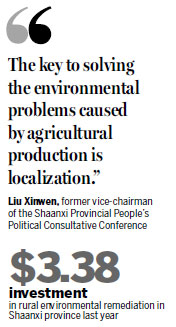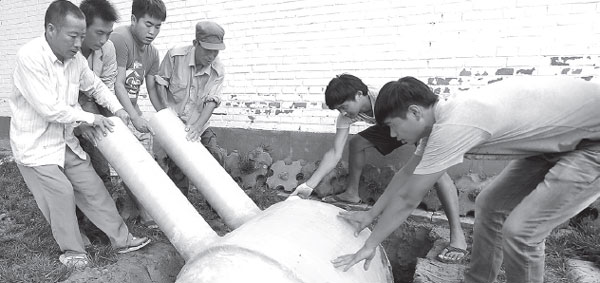Province works with waste to clean up and alleviate poverty
To improve the natural environment and people's quality of life in rural areas, villages in Shaanxi province have explored a series of green projects to boost sustainable development and poverty alleviation, said local residents.
"We now have clean roads, blue skies and green trees, without piles of garbage or flowing sewage like in the past," said Yan Xilian, a farmer in Yanjiabao village in Shaanxi's Baoji city.
Yan said her hometown has changed a lot in terms of its natural environment and economic development.
"Today, almost every household here opens a farm stay and gains decent salary from tourists," she said.
Surrounded by rivers and mountains, Yanjiabao village under Taibai Mountain is a demonstration area for green development in Shaanxi.

Combining environmental renovation with rural tourism, the village is famed for its Anling ancient buildings with an architectural style dating back to the Ming Dynasty (1368-1644). It is now opening tourist experience zones that include sightseeing, local food and folk arts.
In July last year, the village built a sewage station to deal with waste water by adopting the method of artificial subsurface flow wetlands. To date, the station has helped a total of 443 households and 1,670 residents to tackle sewage treatment problems.
Statistics from the local government show that Shaanxi province invested some 23 billion yuan ($3.38 billion) in rural environmental remediation in 2015 and built 6,494 projects relating to garbage and sewage treatment, covering 593 counties and 3,951 villages. More than 6 million people have benefited from those green initiatives.
As an efficient and low-cost way to gather sewage and generate clean water, the station in Yanjiabao village spreads out a pipeline network to every household.
It then disposes of sewage through racks, sand basins, anaerobic pools and clarifiers, and degrades water pollutants such as ammonia nitrogen and chemical oxygen demand in the wetlands with water plants like reeds, bulrush and cannas.
"The purified water is of good quality and can irrigate farmlands directly through canals," Yan said.
Liu Xinwen, former vice-chairman of the Shaanxi Provincial People's Political Consultative Conference, said great changes have been taking place in China's rural areas in recent years amid economic and social development.
"The key to solving the environmental problems caused by agricultural production is localization. We should assess the pollutant sources of different regions, motivate the public to play a part in prevention and establish long-term mechanisms for treatment," Liu said.
Yan Qiuli, another villager in Hengqu town in Mixian county in Baoji, said he likes his job as a garbage cleanup worker since it contributes to a better future for his town.
"I drive my garbage transport car to clean and remove rubbish from trash cans and stations at 7 am every morning, then gather and move all that waste to the landfills in the afternoon," he said, adding that the big issue for the government is to construct a sustainable system for waste recovery and recycling. Yan believes that garbage is like an undiscovered resource that has been misplaced.
Proper allocation of waste can not only help to resolve environmental pollution but also bring in huge business opportunities if people make use of them, he said.
The landfill in Hengqu was put into operation in 2015 with a model of "classification by household, gathering by village, transport by town, and dealing with by counties".
It aims to clean out waste daily and dump them once a week. The landfill is covered by fertile soil for planting trees and forests.
Wang Ninggang, Party chief of Mixian county, said the microenvironment is vital to people's livelihood, though appears to be irrelevant to GDP.
He said thanks to sustainable projects, Mixian now has a more beautiful environment and open market economy. To date, the county has attracted more than 250 projects and built nine industrial parks with a production capacity of 20 billion yuan and tourism revenue of 1.51 billion yuan.
Shuikou town in Xianyang city in Shaanxi opened a "garbage bank" recently where villagers could earn money by gathering plastic bags, bottles and old batteries. A total of 200 villagers have participated in the project.
Other green projects include the using of livestock manure from agriculture industry into biogas tanks in Wufeng village, in Hanzhou city, and the technological improvement of straw fibers by Xi'an Xintiandi Grass Co.
Wang Zelin contributed to this story
Contact the writers at wangjinhui@chinadaily.com.cn and luhongyan@chinadaily.com.cn
|
Using artificial subsurface flow wetlands and installing household purification facilities are common ways to deal with sewage in rural areas. Li Xiao Guo / Xinhua |
|
Villages in Shaanxi have largely improved natural environment due to sustainable projects. Provided To China Daily |
(China Daily 11/11/2016 page14)
















